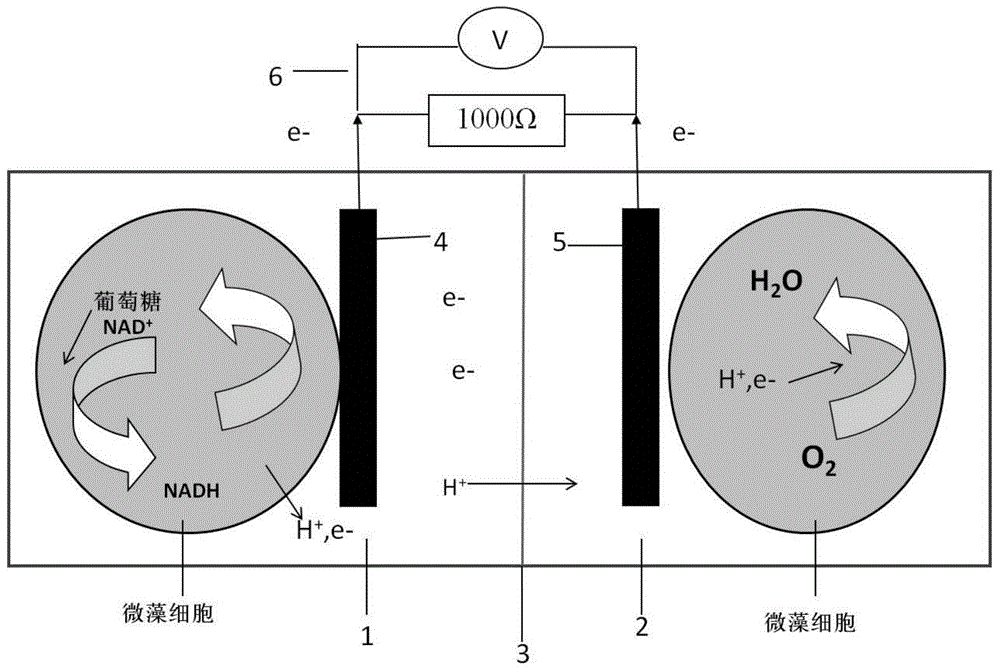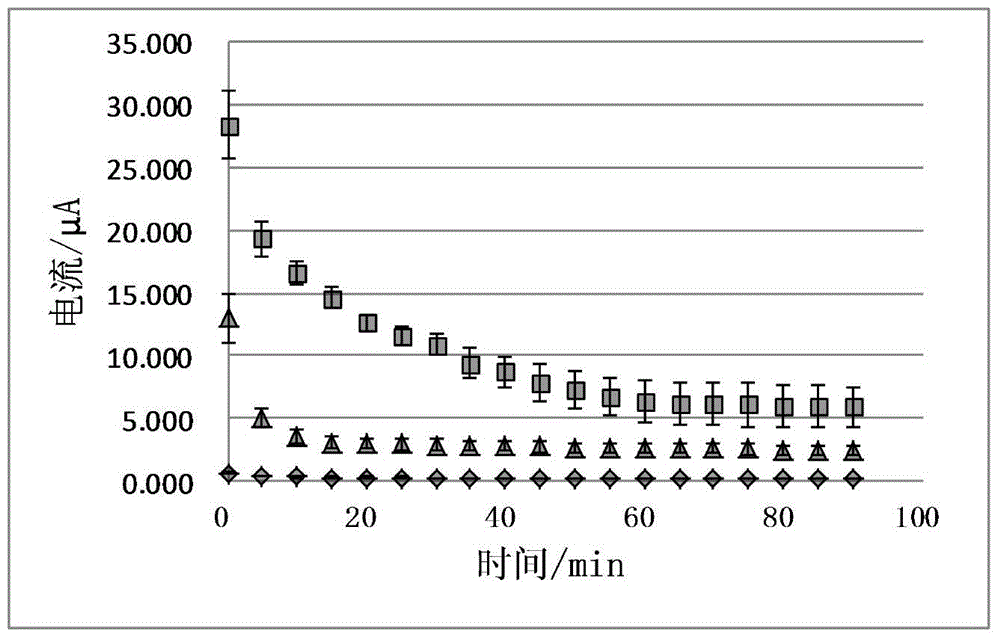Microalgae biological direct-driven power generation battery
A technology of microalgae biology and batteries, which is applied in the direction of biochemical fuel cells, battery electrodes, fuel cell parts, etc., and can solve the problems of high cost and easy poisoning of metal electrodes
- Summary
- Abstract
- Description
- Claims
- Application Information
AI Technical Summary
Problems solved by technology
Method used
Image
Examples
Embodiment 1
[0019] Such as Figure 1a As shown, the microalgae biological direct-driven power generation battery described in the first embodiment of the present invention includes an anode pool 1 with microalgae organisms inside and a cathode pool 2 adding an oxidant solution, separated by a proton exchange membrane 3 between the two pools , the anode 4 and the cathode 5 are respectively fixed inside the anode pool and the cathode pool, and are connected by an external circuit 6 . The microalgae in the anode pool are direct electron donors, through the metabolism of glucose, in the coenzyme NAD + Under the action of the electrons and protons, the generated protons are transferred to the cathode cell through the proton exchange membrane, and the generated electrons are transferred from the external circuit to the cathode through the electron transport chain, and combine with the oxidant hexacyanoferric ion in the cathode cell to form hexacyanide ferrous cyanide ion.
[0020] The microalg...
Embodiment 2
[0024] The microalgae direct drive power generation battery is the same as in Example 1, except that the oxygen absorber sodium sulfite (1 g / liter) is added to the anode pool, Figure 3a The oxygen absorber sodium sulfite (1 g / L) was added to the anode cell, and the cell density of Chlorella pyrenoidosa was 5.94 x 10 6 Cells / ml, under the conditions of light intensity of 2500 lux, 3500 lux, and 6500 lux respectively, the current produced by Chlorella pyrenoidosa, the current data are represented by mean ± standard error. When the illuminance was 2500 lux and 3500 lux, the initial current intensity was higher, and the achievable maximum values were 70μA and 78μA, respectively, and stabilized at 60μA after 100min.
[0025] Figure 3b Add oxygen absorbent sodium sulfite (1 g / L) to the anode pool, and when the illuminance is 3500 lux, the cell density of Chlorella pyrenoidosa is 3.68×10 7 , 3.08x 10 7 , 1.39x 10 7 , 5.94x 10 6 Under the condition of cells / ml, the current pr...
Embodiment 3
[0027] The microalgae direct-driven power generation cell is the same as in Example 1, except that 1000 ppm RVT and 1000 ppm DNP or 20 ppm 4NA are added to the fuel cell. Figure 4a This is the current comparison graph under the condition of adding 1000ppm RVT and 1000ppmDNP and without adding RVT and DNP. After adding 1ml of 1000ppmDNP at 45min, the current increases from 3μA to 9μA. The same phenomenon occurs when 1ml of 1000ppmDNP is added at an interval of 30min. , after the third interval of 30min, add 1ml of 1000ppm RVT, the current increased from 3μA to 8μA; Figure 4b This is the voltage comparison graph under the condition of adding 20ppm 4-nitroaniline or not adding 4NA, in which the voltage of the microalgae battery added with 4NA started to increase at 30min, and stabilized at 38mV after 130min.
PUM
 Login to View More
Login to View More Abstract
Description
Claims
Application Information
 Login to View More
Login to View More - R&D
- Intellectual Property
- Life Sciences
- Materials
- Tech Scout
- Unparalleled Data Quality
- Higher Quality Content
- 60% Fewer Hallucinations
Browse by: Latest US Patents, China's latest patents, Technical Efficacy Thesaurus, Application Domain, Technology Topic, Popular Technical Reports.
© 2025 PatSnap. All rights reserved.Legal|Privacy policy|Modern Slavery Act Transparency Statement|Sitemap|About US| Contact US: help@patsnap.com



